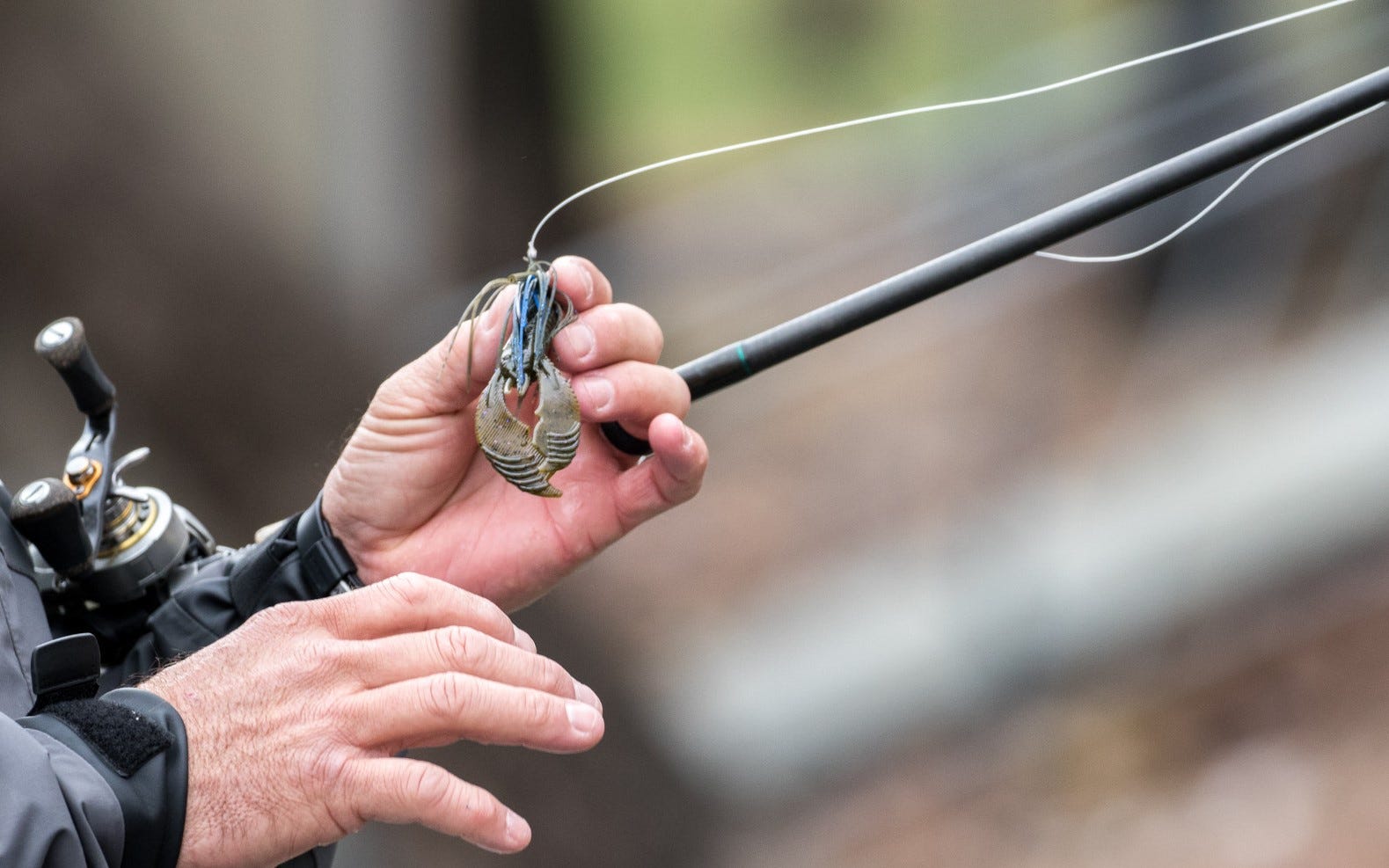- Feb 20, 2023
Your Guide to Selecting the Best Bass Fishing Jig
We’ll break down key differences among various bass jigs and trailers to help you select the perfect combination for the waters you are fishing and the technique you choose to use.
Picking the best bass jig to tie on can be confusing because many jigs have much in common, appearance wise. Bass jig are not all the same, though. Jigs get used for a vast range of water types and presentations, and different tasks call for different tools.
The jig selection process involves looking at the features that distinguish jig models and considering questions about color combinations and trailer types. When you look at factors like water color and temperature, depth and the type of cover and think the way you want to present a jig with those variables in mind, the selection process becomes easier. We’ll walk through those factors, one at a time.
Bass Jig Elements
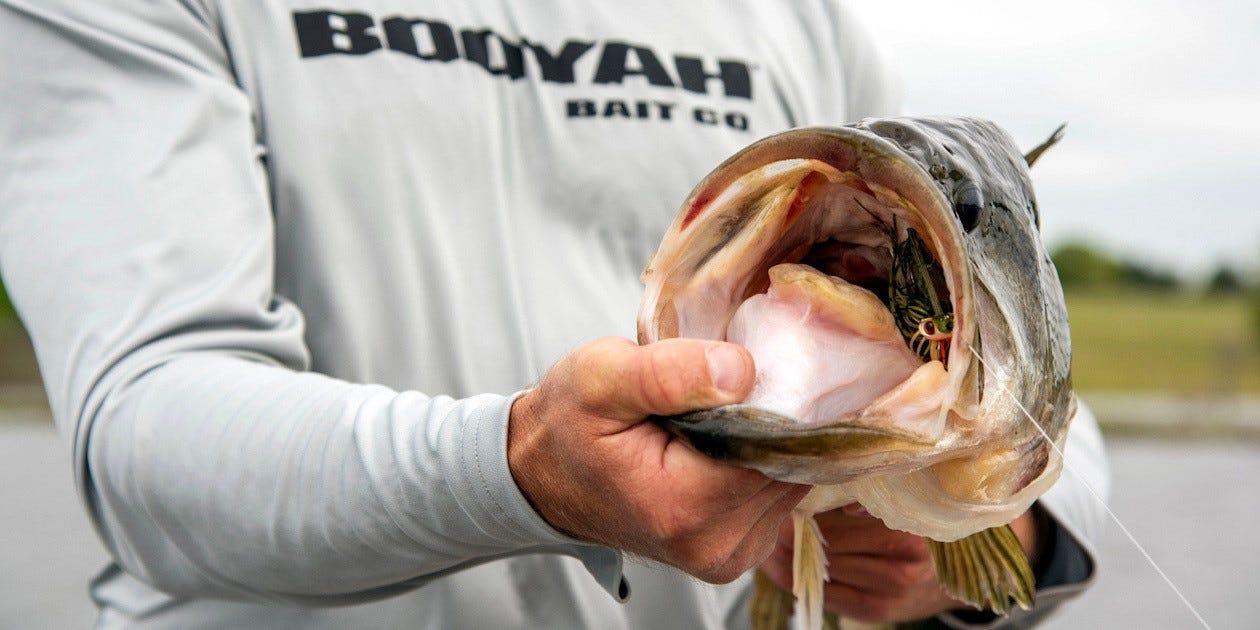

Picking the best bass jig for any given situation begins with an understanding of the primary variables that distinguish jigs from one another.
Head shape tops the list. The shape of a jig’s head impacts the way the lure penetrates vegetation or wood cover, how it moves across rocky bottoms, the posture of trailers, and the way the jig swims through open water or cover. While they can be used for a variety of applications, the War Eagle Jiu-Jigsu Jig and BOOYAH Boo Jig were designed primarily for flipping. The head shape works its way down through wood cover and penetrates vegetation well. Meanwhile, round-headed jigs like A War Eagle Heavy Finesse Jig, are excellent for hopping or dragging along rocky bottoms. The BOOYAH Mobster Swim Jig has a completely different shape that helps keep it high in the water column, cuts through vegetation and provides an extra shimmy.
Closely related, jighead weight impacts how quickly a bait falls through the water column or can be swam, how effectively it can be cast or pitched and the depth and thickness of cover it can be fished effectively through. Heavier jigs also tend to be a bit larger baits overall, and lighter ones, smaller, affecting the profile and often corelating with the size of hook. Many bass jigs fall in the 3/8- to 5/8-ounce range. Lighter weight models offer a degree of finesse, while heavier jigs penetrate thick stuff effectively and allow for faster, more aggressive presentations.
A bass jig’s hook is another important consideration, and there is not a “correct hook” for every situation. Flipping jigs need big stout hooks that won’t bend when matched with braid and a stout rod for putting serious pressure on big bass to haul them out of thick cover. Extreme finesse jigs, at the other end of the spectrum, need light wire hooks that can penetrate without hard hooksets when fished on lighter line. The common denominator is that every hook must be sharp.
The skirt is another important variable. Skirt thickness, length, shaping, and materials all affect the bait’s profile, the amount the skirt moves and the color patterns that can be achieved. Skirt durability also varies based on materials and construction.
Other factors that set apart jigs include paint jobs, etched finishes, details like raised eyes, keepers for trailers and weed guards. Consider how you intend to fish a jig, the look you need and the cover you intend to fish around or through, and these factors together often point toward the perfect bass jig for the job.
Color Theory
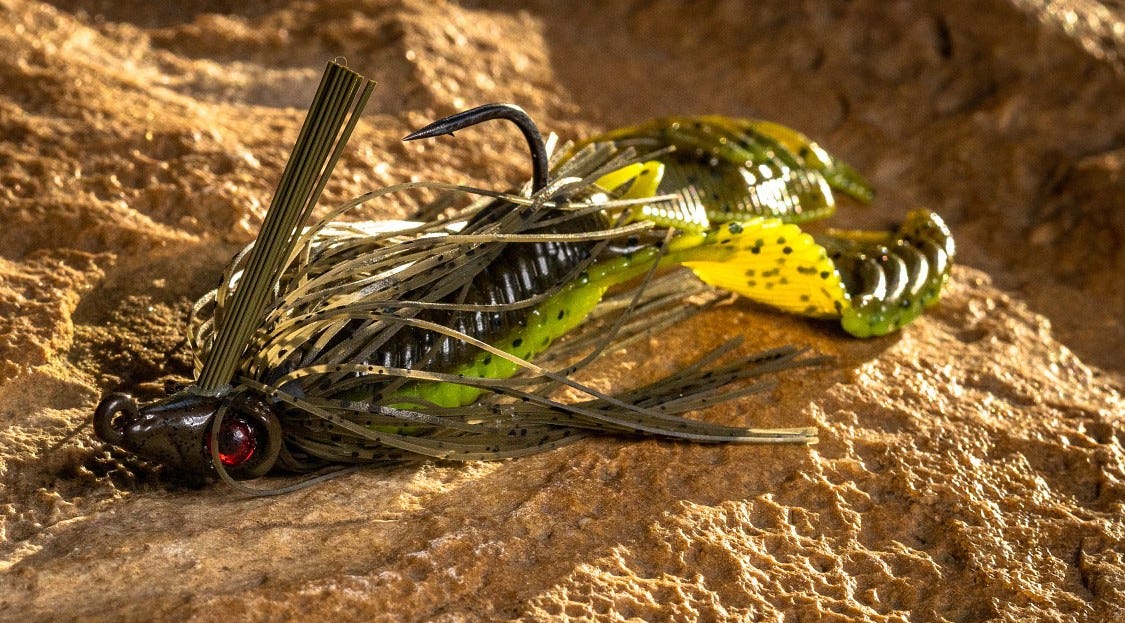

Black and blue and dark greens and browns are traditional favorites for jigs largely because flipping and pitching baits into dark places is the most stereotypical jig fishing application. Those colors remain important, especially for jig fishing in dark places and stained waters. However, they are only a part of the jig color story.
Because jigs so frequently get used to imitate crawfish, browns, orange and greens of various sorts are popular for most jig fishing applications. When the cover is rock and the water is clear, though, extra natural craw patterns that blend colors and even have some translucent skirt strands become important.
At the other end of the spectrum, some of the best colors for flipping or swimming jigs in thick stuff when visibility is low are extra dark or bright (or both), often featuring black and chartreuse.
Not to be overlooked, especially for swimming jigs, are shad-imitating colors. Shad colors get the most attention in mid-spring, when the shad spawn, and during fall, when bass key heavily on big schools of shad in creeks. However, white, silver and chartreuse jig color patterns have the potential to produce well anytime bass are relating to shad in an area.
Another important color question for jig fishing relates to the trailer. The most prevalent school of thought is to match jigs and trailers in base color and overall tone. However, some anglers like to make one element a bit more flashy or translucent than the other, and another group prefers to contrast jig and trailer colors to maximize visibility and appeal. As an example, those anglers might opt for an orange dominant trailer for a black and blue jig.
Trailer Talk
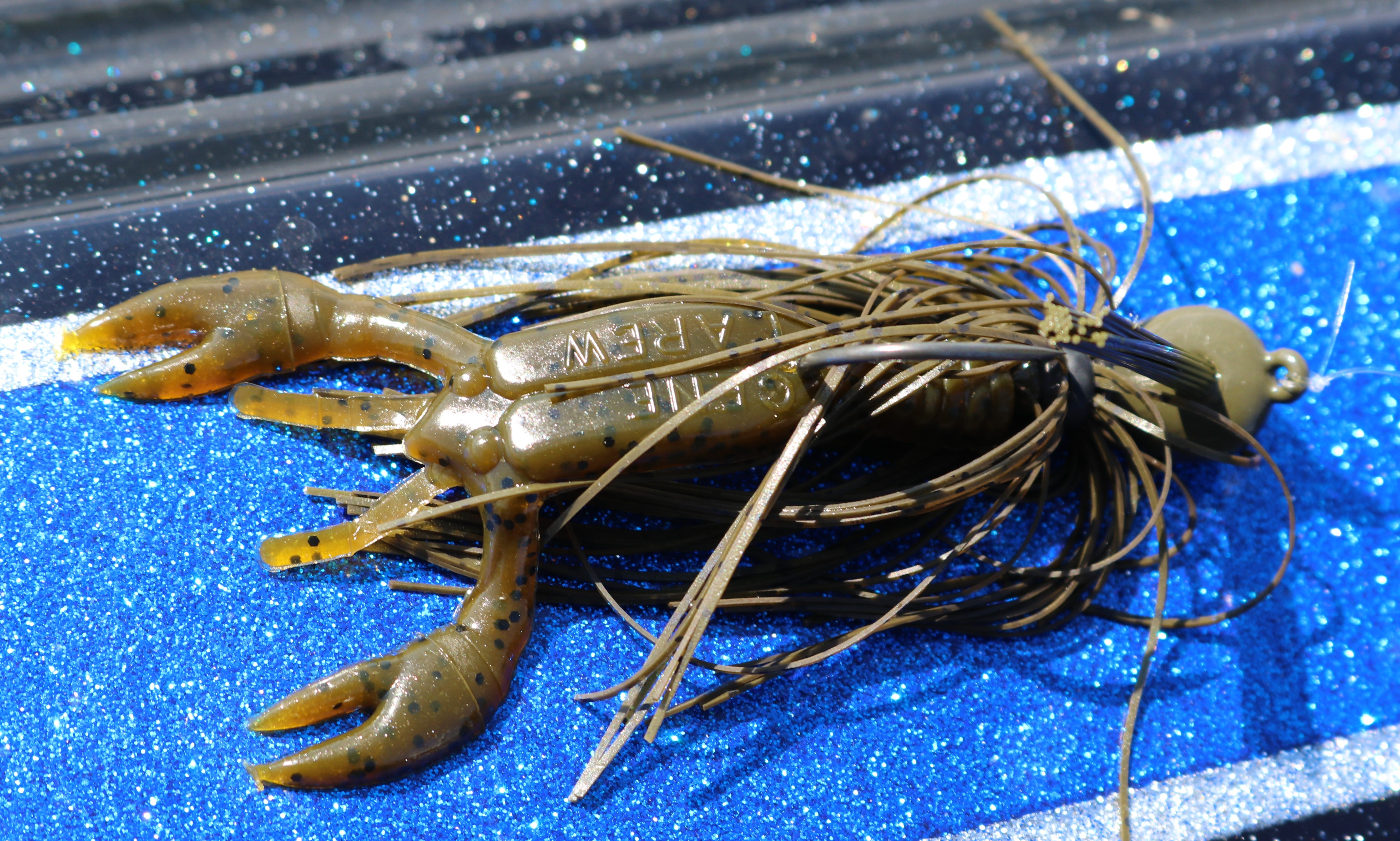

Most anglers match a jig with some type of trailer, almost all the time, and the type of trailer selected has a major impact on the bait’s overall profile and action. The same jig can become a very different offering in the water based on the trailer.
Important factors for picking the best trailer include the forage you are imitating, the length and bulkiness of offering you want to present and whether you’re seeking subtle motion, a hard thump, flailing appendages, or some other type of look.
A Gene Larew Salt Craw, as an example, has a very natural crawfish appearance and moves subtly, making it an excellent pick for slower presentations and winter chilled presentations. A YUM Craw Chunk is similarly subtle with its motion but offers a slightly bigger profile. A Larew Hammer Craw or YUM Christie Craw provide a crawfish profile but with much more swimming action. For more thump and an elongated profile, a YUM Swim’N Dinger or a swimbait like a YUM Pulse provides an outstanding jig trailer option.
Again, it’s important to consider the type of jig presentations and the anticipated mood of the fish and to match your trailer accordingly. Also, don’t be shy about experimenting with trailers to pattern fish. Something as simple as choosing one size larger Craw Chunk to slow the fall rate could make all the difference.
Lurenet Jig Fishing Manual
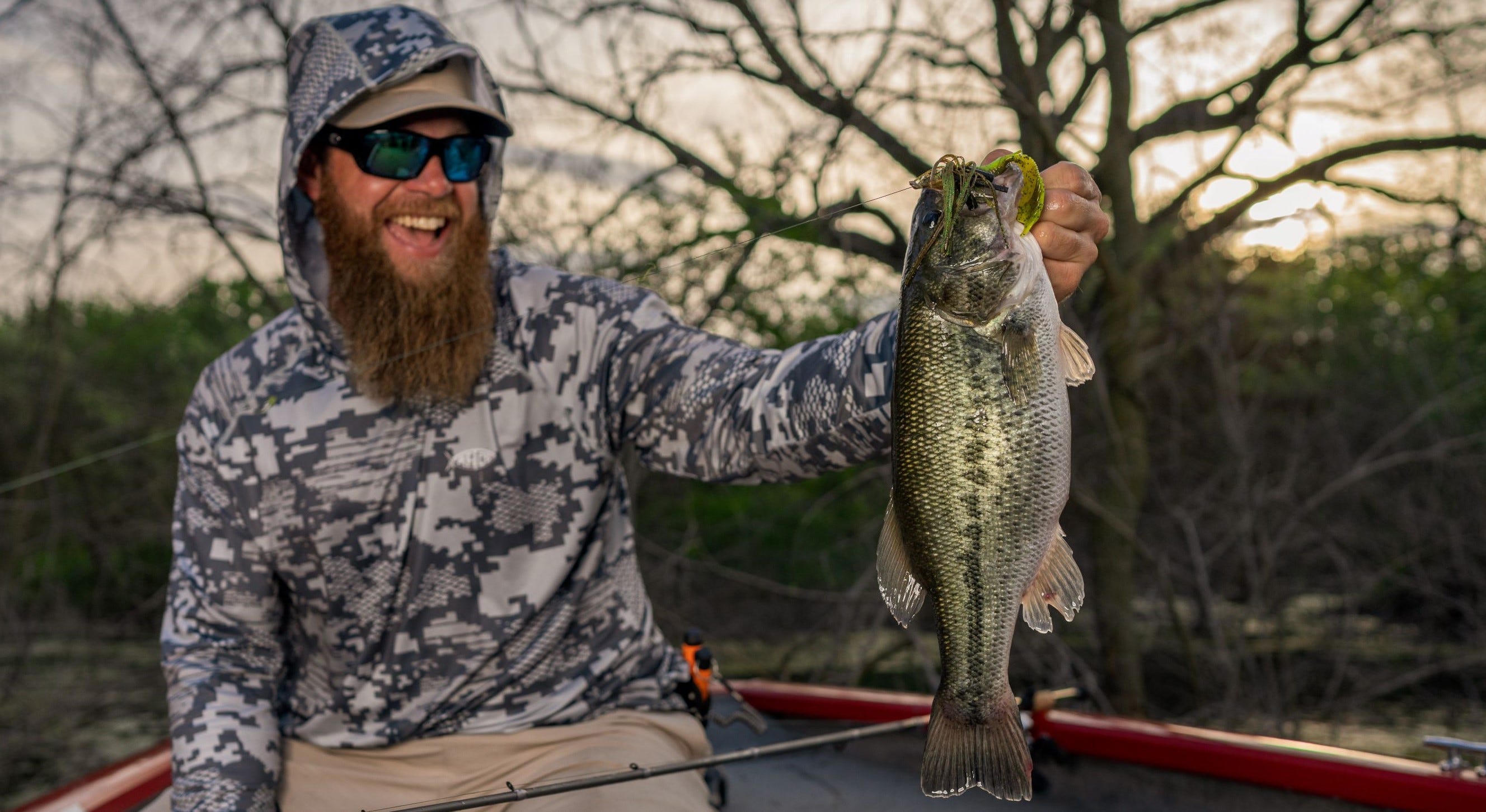

Whether you’re shopping at home to get your boxes stocked for upcoming fishing trips, on the lake trying to decide which jig to tie on, or simply seeking to learn more about the jig selection process, the highly interactive Lurenet Jig Fishing Manual is a very helpful tool. Using a “heat map” format, like the highly popular heat map for BOOYAH Covert Series spinnerbaits, this guide allows you to look at a specific situation and choose the best jig to fish.
To begin, simply select from four tabs to define the general situation: Rocky Bottom, Wood, Grass, Soft Bottom. From there its set up as a chart, and you simply line up water temperature and water color and click on the nearest X to get a jig recommendation for that situation. The recommendation is specific to size and color and even includes a couple of options for recommended trailers.
5 Fabulous Bass Jigs
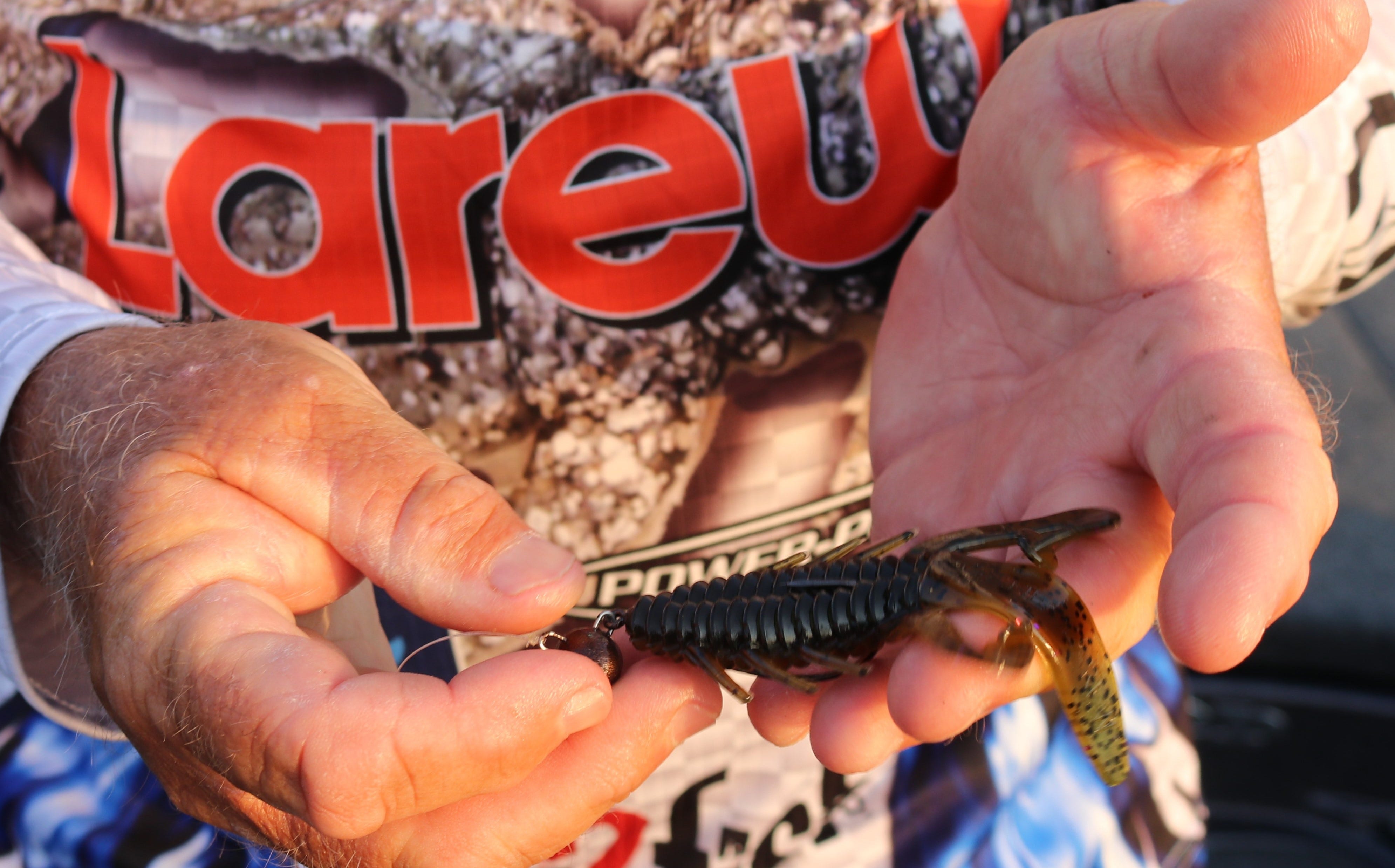

- War Eagle Jiu-Jigsu – It’s hard to not start with the jig that produced all of Jason Christie’s shallow fish on the way to winning the 2022 Bassmaster Classic. Pro-designed and with premium components, the Jiu-Jigsu was designed for pitching and flipping into cover and wrangling big bass out of the thick stuff, and in the minds of many veteran bass anglers is the ultimate flipping jig.
- BOOYAH Mobster Swim Jig – Based on a design that was the long-time weapon of the Muddy Water Mob on the Arkansas River, the Mobster Swim jig is made to swim through shallow cover to prompt attacks from aggressive bass. The head design cuts the grass and add swimming action. A stout hook ensure that fish get hooked and landed.
- BOYAH Finance Jig – The Finance Jig has a round head that’s outstanding for working rocky bottoms and finesse jig skirt shaping that makes it extra appealing in clearer water, especially for smallmouths and spotted bass. However, 3/8- an 1/2-ounce sizes allow you to work deep more efficiently than you can with many finesse style bass jigs.
- Gene Larew Biffle Hard Head – Tommy Biffle popularized an entire new category of jigs more than a decade ago when he won two national tournaments and posted several other high places by fishing a Biffle Bug on a special swivel-headed jig that became the Biffle Hard Head. Whether matched with a Biffle Bug or another soft-plastic body, the Hard Head is allowed to sink and then cranked steadily so that it works along the bottom.
- BOOYAH Baby Boo Jig – The Baby Boo Jig offers the design of a flipping jig with a head shape for working cover and a full skirt to help bass find it. As the name suggests, though, it’s a “baby” for this style of jig, in 3/16- and 5/16-ounce sizes and with a lighter wire hook to provide a smaller profile and slower fall and allow you to fish it effectively with a little less beefy tackle than is needed for most flipping jigs.
8 Outstanding Jig Trailers
